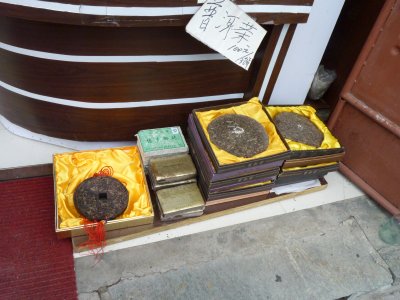
We first saw tea growing at Xishuangbanna (seems a long time ago rather than a few days).
The region was originally called Puer. Hence Puer Tea.
We are used to the black tea from India. In China there is green, black, white, etc. tea. And many ways of processing it.
The bricks were created so tea could be transported to Tibet and exchanged for horses. It ferments and matures along the way.
| Xia Dynasty | About 1994 BCE - 1766 BCE |
| Shang Dynasty | 1766 BCE - 1027 BCE |
| Zhou Dynasty | 1122 BCE - 256 BCE |
| Qin Dynasty | 221 BCE - 206 BCE |
| Early Han Dynasty | 206 BCE - 9 AD |
| Xin Dynasty | 9 AD - 24 AD |
| Later Han Dynasty | 25 AD - 220 AD |
| Three Kingdoms - Period of Disunity | 220 AD - 280 AD |
| Sui Dynasty | 589 AD - 618 AD |
| Tang Dynasty | 618 AD - 907 AD |
| Sung Dynasty | 969 AD - 1279 AD |
| Yuan Dynasty | 1279 AD - 1368 AD |
| Ming Dynasty | 1368 AD - 1644 AD |
| Manchu or Qing Dynasty | 1644 AD - 1912 AD |
Here's the dynasties for those who may be interested.
Really all we knew before arriving here was that there are expensive vases from the Ming Dynasty.
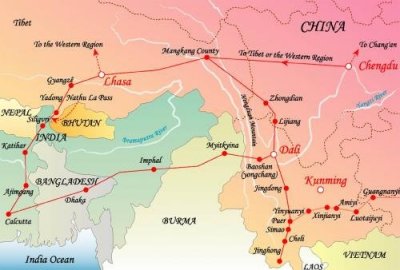
The horses were required by the Chinese military from around about the Tang Dynasty to defend the borders.
Possibly 25,000 horses per year.
The tea was drunk by the Tibetans as butter tea. Possibly up to 2,500 tonnes per year.
The trade was government controlled. Even the Dalai Lama got his cut (in tea of course).
The Tea Horse Road existed as a trade route until about the 1950's. Its also been called the Southern Silk Road.
We are more or less following the Tea Horse Road North to Li Jiang and almost to Shangri-La. We also realised that Jing Hong is on the road.
The area further North, Mankang County is the source of three rivers. The Irrawaddy, Mekong and Yangtse.
The loop of the Yangtse to the North of Li Jiang contains the Leaping Tiger Gorge. About as far North as we will venture before backtracking and heading North West.
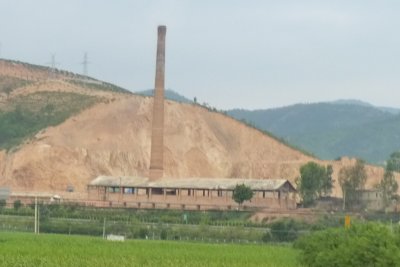
Most valleys we passed through had one or more brick works.
Lots of building occurring.

It looked like the consistency of yoghurt and was being shovelled.
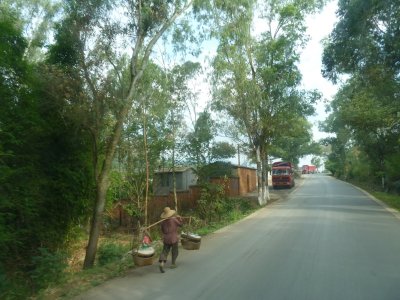
We've quickly begun to recognise that red trucks are big and long.
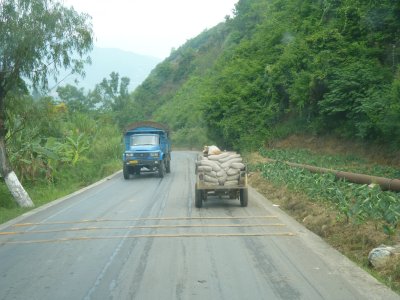
They are also slower than red trucks.
Yellow trucks are newer and shinier than red trucks, and just as big.

We are at the Southern end of the Hengduan Mountain Range. Probably associated with the Eastern end of the Himalayas.
Contrary to expectations the roads go up and over the mountains rather than along the valleys.
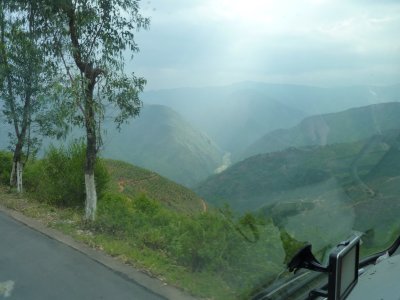
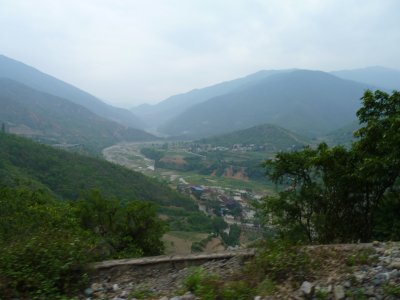
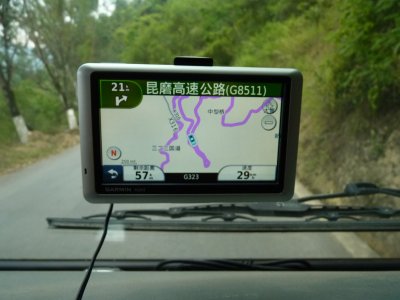
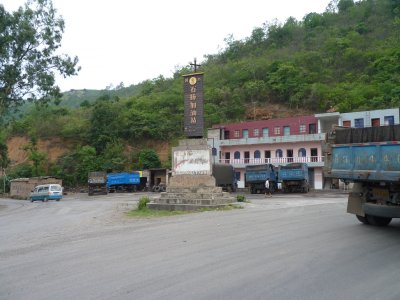
Even with the gps we nearly missed this left turn.
And pass to the left of the pillar.
Junctions are sort of "bell-mouthed" rather than the "T"s we are used to. And none of those white lines to help guide us across them.
Having got to the left of the pillar its quite likely there's something travelling left to right, or merging from the right. Then add in the steering wheel on the wrong side!
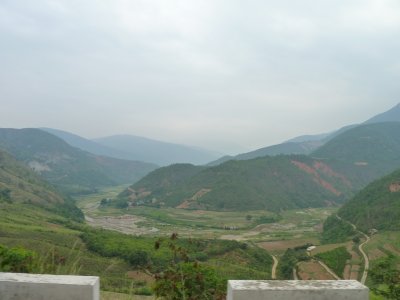
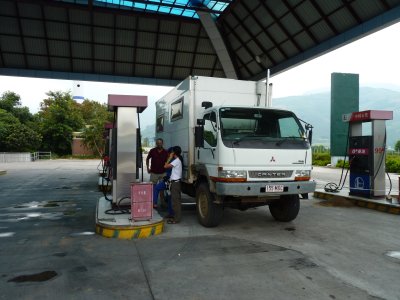
This was our second tank fill in China.
The pumps are labelled with the octane number. Diesel has 0# octane.
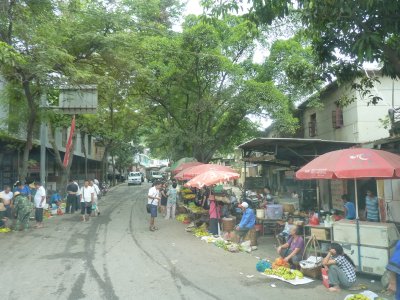
This one was comparatively easy as there was little traffic.
Most of the traffic is local, with a few cars and trucks in for the long distance.
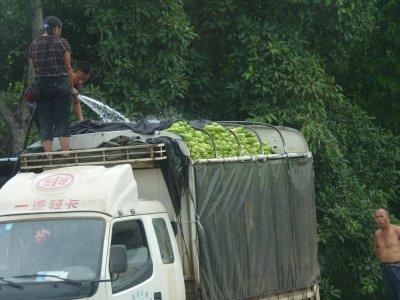
This is a crop of bitter melons being washed.
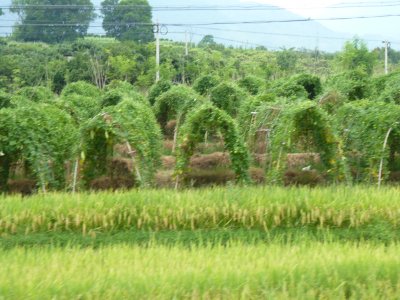
We had some with our first or second meal in China. Very nice in hot weather.
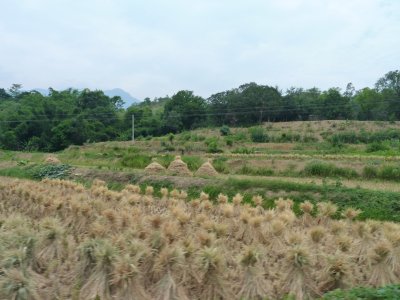
First the hay is collected in small sheaves. Then made into a stack.
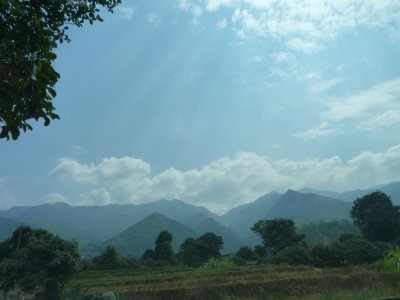
Lost count of how many times we went up and down.
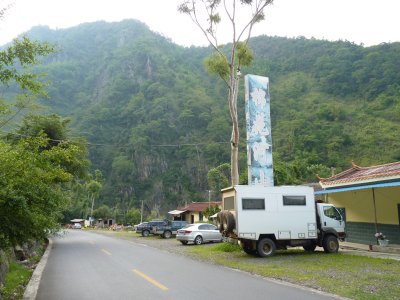
There's almost no traffic at night.
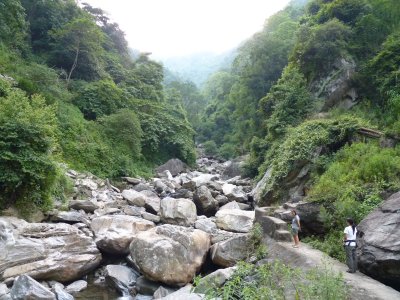
An after dinner evening stroll.
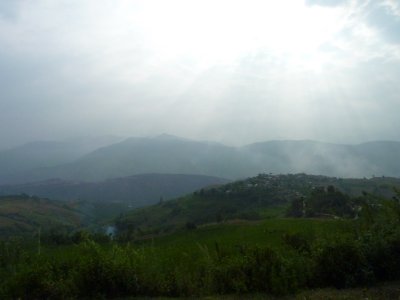
Going up, of course.
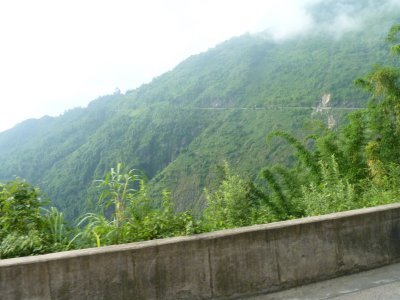
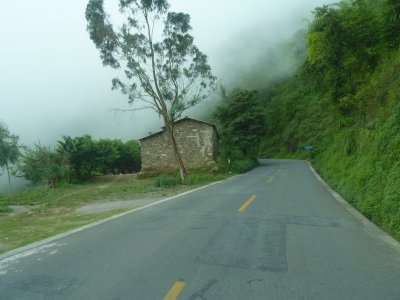
A lot of the solitary buildings in the mountains were of stone.
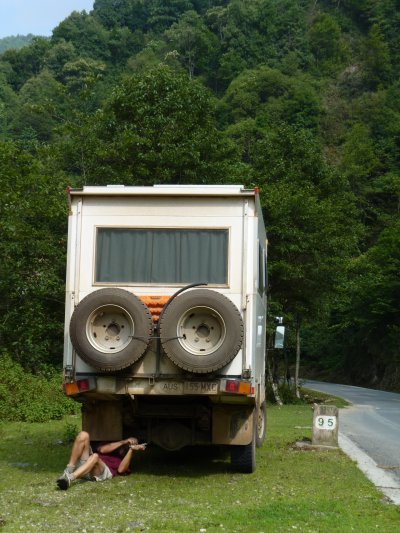
Its really not nice disposing of it where we camped. Quite often on concrete and near buildings.
To compound things the drain is a little blocked. The trick was to empty the grey water tank, move forward, then tackle the drain.
Another part of the trick was avoiding lying on the animal droppings. At least their presence meant we weren't quite so embarrassed at draining the grey water.
Toilet cassettes are emptied at petrol stations with loos that mostly work.
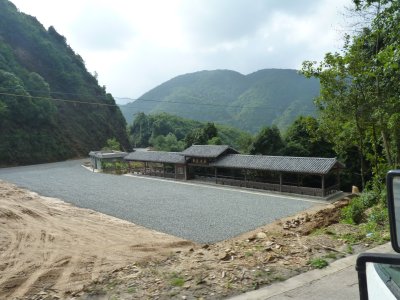
We drove past it but noticed the words "Tea Horse Road" over the door.
All sorts of questions followed and a gradual dawning of where we are travelling.
Some days I'm a bit slow. I'm sure we knew but didn't make the connection. It even featured in the BBC's Wild China series which we watched a couple of times.
Of course our recording is back in Brisbane.
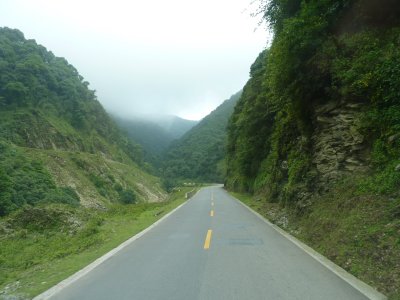
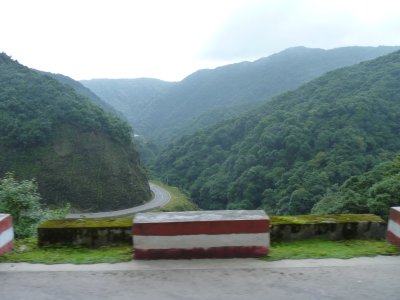
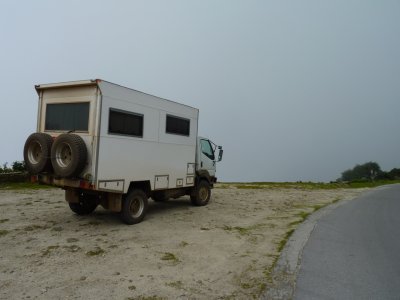
The view would have been stunning, if not for the clouds!
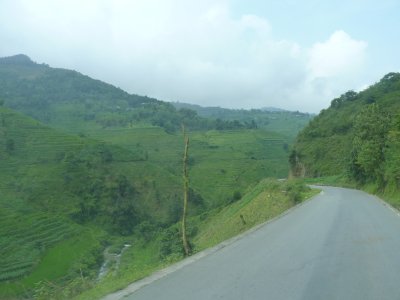
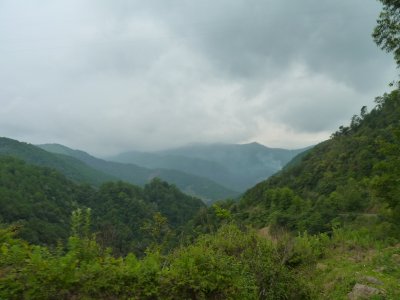
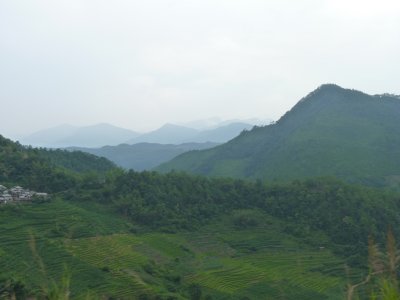
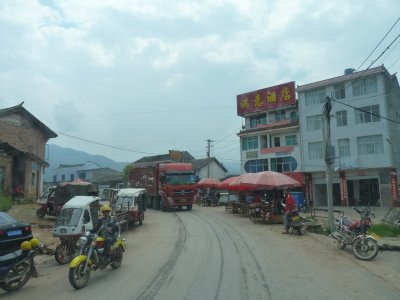
We are now fully trained. Ali and Susanna yell "car", the universal yell for "something is coming". The bit about big red truck follows while I head for the side of the road.
Its not as bad as it seems. The speed limit in built up areas is typically 30 km/h. Some days the traffic actually goes that fast.
We are slowly getting used to vehicles moving at such a slow pace. Driving at 60 km/h on a highway seems horribly fast. We will have to be careful re-adjusting in Europe.
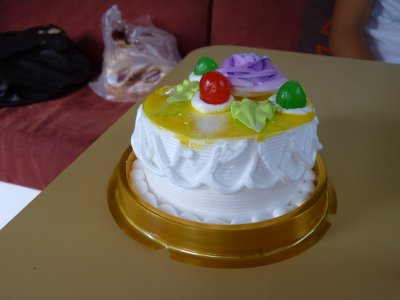
This was a belated birthday cake. Sponge inside. Sweet, sticky, imitation cream and cherries.
It lasted about 2 minutes.
There is also bread available. Sliced. About 20mm per slice.
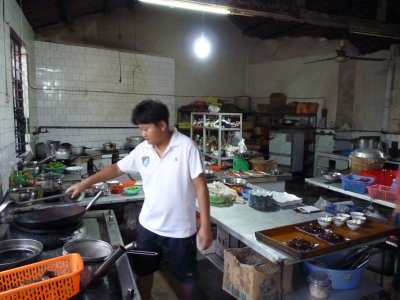
We were stopped in a roadworks queue and noticed a steep driveway.
Took a bit of manouvering to get into it but the traffic parted.
This is the kitchen.
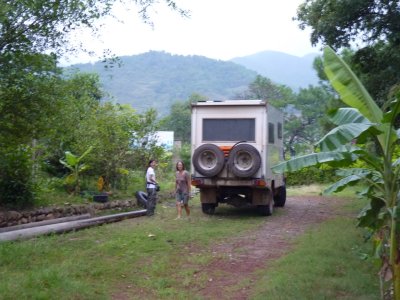
A very nice place to stop.
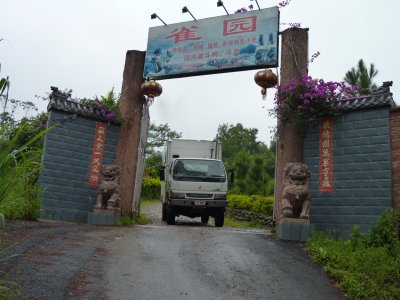
We had to open the gates which were higher than Tardis.
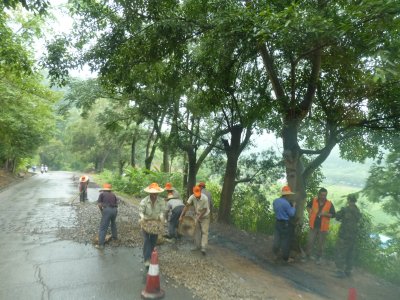

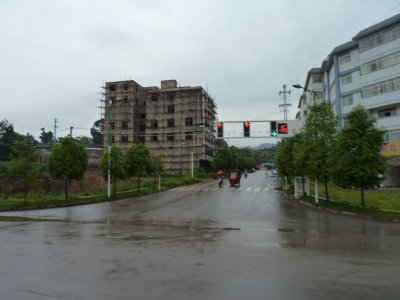
With those wonderful bell-mouthed junctions.
The green right turn arrow is a bit superfluous. Everything turning right moves regardless of the colour of the lights and merges with the traffic crossing from the left.
We are slowly becoming masters of slow motion merging.
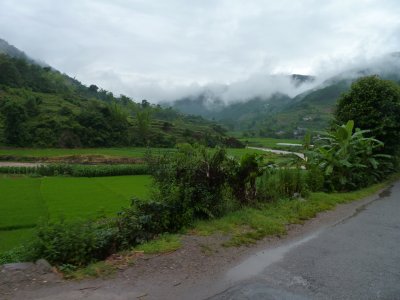
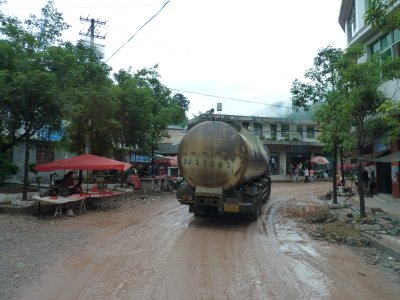
The truck drivers are very good and only occasionally have to get out of their cabs to ask people to move out of the way.
Unlike bus drivers they also indicate when they are going round obstacles. Invaluable to us following.
A very loud hooter helps.
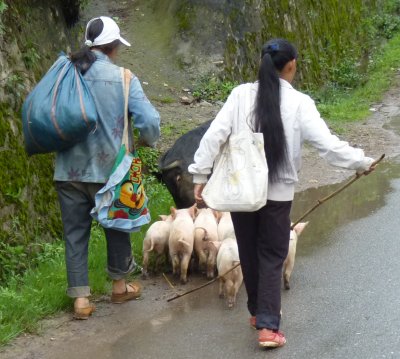
Pigs in this case.
The stick, and a bit of name calling, helps.
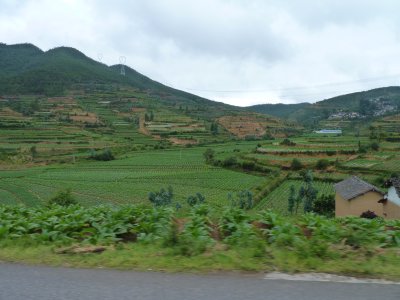
Before bricks in the valleys there were mud bricks. The building bottom right is some sort of storage.
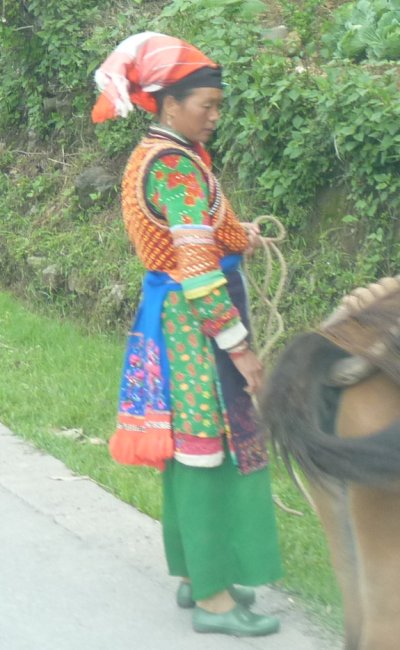
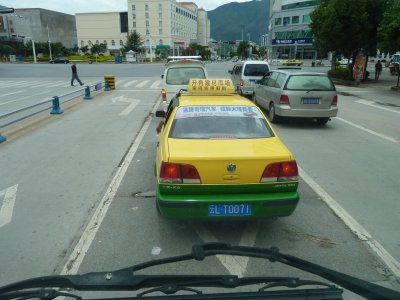
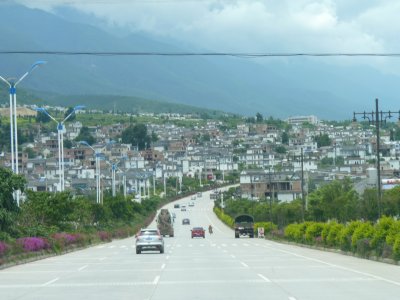
Between mountains on the left and lake on the right.
We found a campsite in a hotel car park in the middle of Old Dali.
Here at last, after three days of driving on mountain roads and a bit of expressway.